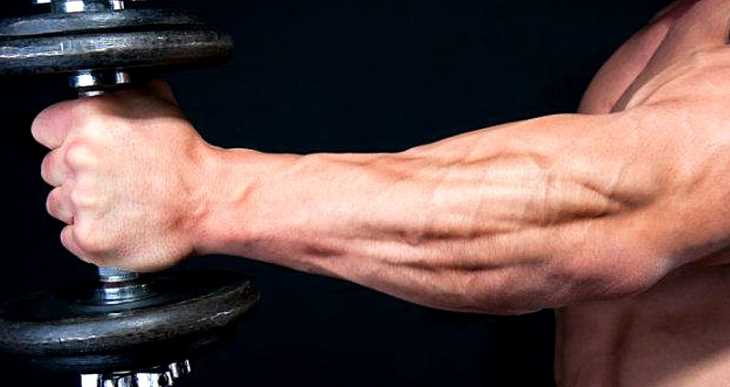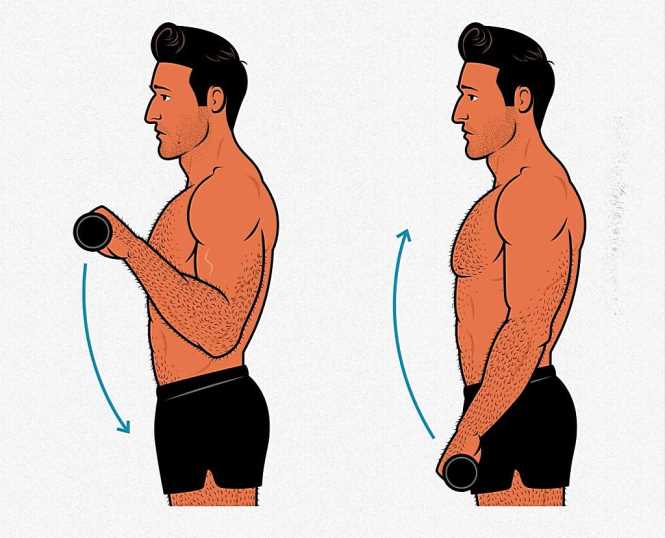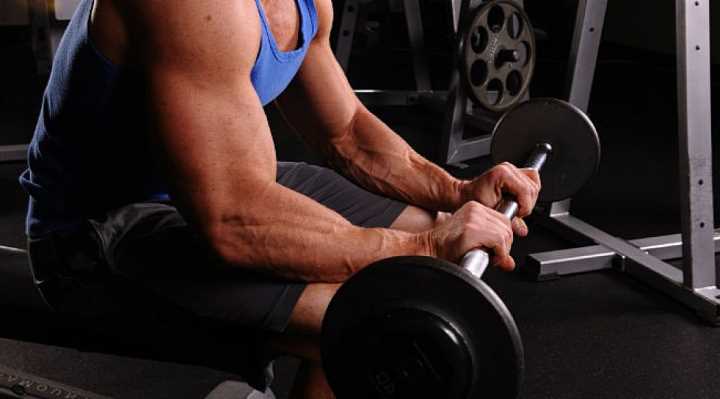 Welcome, fitness enthusiasts! Are you ready to take your forearm strength and sculpting game to the next level? Look no further because we’ve got the ultimate guide for you. Strong and well-defined forearms not only enhance your overall physique but also play a crucial role in various everyday activities and sports. In this blueprint, we’ll dive deep into the world of forearm exercises, training techniques, and muscle development to help you achieve the forearms of your dreams.
Welcome, fitness enthusiasts! Are you ready to take your forearm strength and sculpting game to the next level? Look no further because we’ve got the ultimate guide for you. Strong and well-defined forearms not only enhance your overall physique but also play a crucial role in various everyday activities and sports. In this blueprint, we’ll dive deep into the world of forearm exercises, training techniques, and muscle development to help you achieve the forearms of your dreams.
Are you excited? You should be! We’re about to embark on a journey that will transform your forearms into powerful and eye-catching assets. So, grab your workout gear, put on your favorite workout playlist, and let’s get started!
Understanding Forearm Anatomy
Before we dive into the exercises and training techniques, let’s first understand the incredible complexity of the forearm. Your forearms are home to a network of muscles and structures that work harmoniously to perform a wide range of movements. From gripping objects to twisting your wrists, your forearms are the unsung heroes behind these actions.
Picture this: as you go about your day, typing on your keyboard, carrying groceries, or even playing your favorite musical instrument, it’s your forearms that are doing the heavy lifting. Understanding the anatomy of your forearms will not only give you a newfound appreciation for these muscles but also help you target them effectively during your workouts. So, let’s roll up our sleeves and explore the fascinating world within!
Benefits of Well-Developed Forearms
Building strong and sculpted forearms comes with a myriad of benefits that extend far beyond just aesthetics. One major advantage is the improvement in grip strength and endurance. Whether you’re shaking hands with someone or holding onto a barbell during a heavy lifting session, having powerful forearms will give you an incredible advantage. You’ll notice a significant difference in your ability to maintain a firm grip and perform better in activities that require hand and forearm strength.
Additionally, well-developed forearms contribute to enhanced performance in various sports and exercises. From rock climbing to tennis, basketball to golf, your forearms are engaged in almost every physical activity you can think of. By focusing on forearm muscle development, you’ll see a boost in your performance and overall athleticism. You’ll be able to swing that tennis racket with greater control, climb that rock wall with confidence, and unleash your full potential in whatever activity you choose.

Setting Goals and Developing a Plan
Now that we understand the importance and benefits of strong forearms, it’s time to set some goals and develop a solid plan. Start by assessing your current forearm strength and size. Take note of your limitations and areas that need improvement. Be honest with yourself, but also remember to celebrate your strengths and progress along the way.
Once you have a clear picture of where you stand, it’s time to establish realistic and specific goals. Do you want to increase your grip strength by a certain percentage? Are you aiming to add a specific amount of muscle mass to your forearms? Setting clear goals will give you a sense of direction and motivation as you embark on your forearm-building journey.
Proper Nutrition for Forearm Development
Building strong forearms isn’t just about the exercises; it also requires proper nutrition to support muscle growth and recovery. A balanced diet is key to providing your body with the necessary nutrients for optimal forearm development. Make sure to include a variety of lean proteins, such as chicken, fish, tofu, and legumes, as they are essential for muscle repair and growth.
In addition to protein, don’t forget to incorporate healthy carbohydrates, such as whole grains, fruits, and vegetables, into your meals. These carbs provide the energy your body needs to power through intense workouts and support muscle recovery. Healthy fats, like avocados, nuts, and olive oil, are also important for overall muscle health and hormone production.
Lastly, hydration plays a crucial role in muscle function and recovery. Drink plenty of water throughout the day to keep your muscles hydrated and aid in the delivery of nutrients to your forearms. Remember, a well-nourished body is a strong body, and that includes your forearms!
How to Build the Forearms: Effective Exercises
Now, let’s get down to the nitty-gritty—the exercises that will help you build those enviable forearms. One of the most effective exercises for forearm development is wrist curls. Grab a dumbbell or a barbell, rest your forearms on a bench or your knees, and curl your wrists upward, focusing on the contraction of your forearm muscles. Don’t forget to vary your grip—overhand and underhand—to target different areas of the forearms.
Another essential aspect of forearm training is grip exercises. Utilize grip strengtheners or even everyday objects like stress balls or towels to improve your grip strength. Squeeze and hold, or perform repetitions, to challenge your forearms and increase their endurance.
Additionally, incorporate exercises that involve forearm pronation and supination. This motion involves rotating your wrist from a palm-up to a palm-down position and vice versa. You can perform these exercises with a dumbbell or a barbell, focusing on controlled movements and engaging the forearm muscles throughout.

Progressive Overload and Training Techniques
To maximize forearm growth, it’s important to understand the concept of progressive overload. This means gradually increasing the demands on your forearms over time to stimulate muscle growth. You can achieve progressive overload by increasing the weight, repetitions, or sets of your exercises. Challenge yourself to push past your comfort zone while maintaining proper form to ensure safe and effective training.
In addition to progressive overload, incorporating different training techniques can further enhance forearm development. Try incorporating supersets, where you perform two exercises back-to-back with minimal rest, targeting different aspects of your forearms. Another technique is time under tension, which involves slowing down the tempo of your repetitions, emphasizing the contraction and extension of your forearm muscles. These techniques keep your workouts fresh, challenging, and stimulating for optimal growth.
Injury Prevention and Recovery
When engaging in intense forearm training, it’s crucial to prioritize injury prevention and recovery. Common forearm injuries include strains, tendonitis, and overuse injuries. To minimize the risk, always start your workouts with a proper warm-up, consisting of dynamic stretches and mobility exercises for your wrists and forearms. This prepares your muscles and joints for the upcoming workout and increases blood flow to the area.
Equally important is the cool-down phase, where you perform static stretches for your forearms, wrists, and hands. This helps reduce muscle soreness and promotes flexibility. Additionally, give your forearms adequate rest between workouts to allow for recovery and growth. Listen to your body and don’t hesitate to take a day off or adjust the intensity of your training if needed.
If you do experience any discomfort or signs of injury, seek professional medical advice. Early intervention and proper care can prevent further complications and ensure a speedy recovery, getting you back on track to achieving those strong and sculpted forearms.
Monitoring and Tracking Progress
To stay motivated and track your forearm-building journey, it’s essential to monitor and measure your progress. Start by regularly measuring your forearm strength and size. You can use a grip strength meter to track improvements in your grip strength over time. Additionally, use a measuring tape to measure the circumference of your forearms at specific intervals, such as every four weeks. Seeing tangible results will keep you motivated and help you identify areas that may need more attention.
Another helpful tool is keeping a workout journal or using fitness apps. Record the exercises you perform, the weight and repetitions used, and any notes about your form or how you felt during the workout. This allows you to track your performance, identify patterns, and make adjustments to your training program as needed. Fitness apps can also provide guidance, track your progress, and even offer reminders for your workouts, making it easier to stay consistent and accountable.

Troubleshooting and Common Challenges
It’s not uncommon to face challenges or hit plateaus during your forearm-building journey. When progress seems to stall, it’s time to troubleshoot and find strategies to overcome these obstacles. One effective method is to incorporate new exercises or variations to challenge your forearms in different ways. For example, try using thick grip attachments or performing exercises on unstable surfaces to engage additional muscle fibers.
Muscle imbalances can also hinder forearm development. Be mindful of your training routine and ensure that you target all aspects of your forearms evenly. If you notice a particular area lagging behind, incorporate exercises specifically targeting that muscle group. Remember, balance is key for overall forearm strength and aesthetics.
Lastly, motivation can sometimes dwindle, especially when progress feels slow. Remind yourself of the reasons why you started this journey and set small milestones along the way to celebrate achievements. Surround yourself with a supportive community or workout partner who can keep you accountable and provide encouragement. Keep pushing forward, and soon enough, you’ll break through any challenges that come your way.
Advanced Techniques for Forearm Development
Once you’ve mastered the basics and built a solid foundation, it’s time to explore advanced techniques to take your forearm development to the next level. One approach is to incorporate isolation exercises that target specific forearm muscles. For example, reverse curls focus on the brachioradialis muscle, while finger curls target the flexor muscles in your forearms. By incorporating these exercises, you can fine-tune the development of individual forearm muscle groups.
Additionally, implementing advanced training methods such as drop sets, where you reduce the weight after reaching muscle fatigue, or incorporating eccentric contractions, which emphasize the lengthening phase of the muscle, can provide a new stimulus for growth. These techniques challenge your forearms in unique ways and promote further muscle development and strength gains.
Supplemental Approaches
While proper nutrition should be the foundation of your forearm-building journey, some individuals may consider incorporating supplements to support their goals. However, it’s important to note that supplements should complement a balanced diet and training program, not replace them. Consult with a healthcare professional or a registered dietitian before adding any supplements to your regimen.
Some supplements that may be beneficial for muscle growth and recovery include protein powder, which can help meet your daily protein requirements, and branched-chain amino acids (BCAAs), which support muscle repair and reduce muscle soreness. Additionally, omega-3 fatty acids, found in fish oil supplements, may aid in reducing inflammation and promoting overall joint health.
Remember, supplements are not a magic solution, and their effectiveness can vary from person to person. Focus on a well-rounded approach that prioritizes proper nutrition, consistent training, and adequate rest and recovery for optimal forearm development.
Conclusion
Congratulations on completing the Ultimate Forearm Building Blueprint! Armed with knowledge about forearm anatomy, effective exercises, training techniques, and injury prevention strategies, you’re now equipped to sculpt and strengthen your forearms like never before. It’s time to apply this knowledge and take action.
Building strong and sculpted forearms takes time, consistency, and dedication. Set your goals, track your progress, and stay motivated throughout the journey. Remember, everyone’s progress is unique, so focus on your own growth rather than comparing yourself to others. Celebrate each milestone and enjoy the process of transforming your forearms into powerful assets that will enhance your performance in various activities and boost your confidence.
Get ready to crush those forearm workouts, embrace the burn, and watch your forearms evolve into a symbol of your hard work and determination. You’ve got this!
Leave a Reply